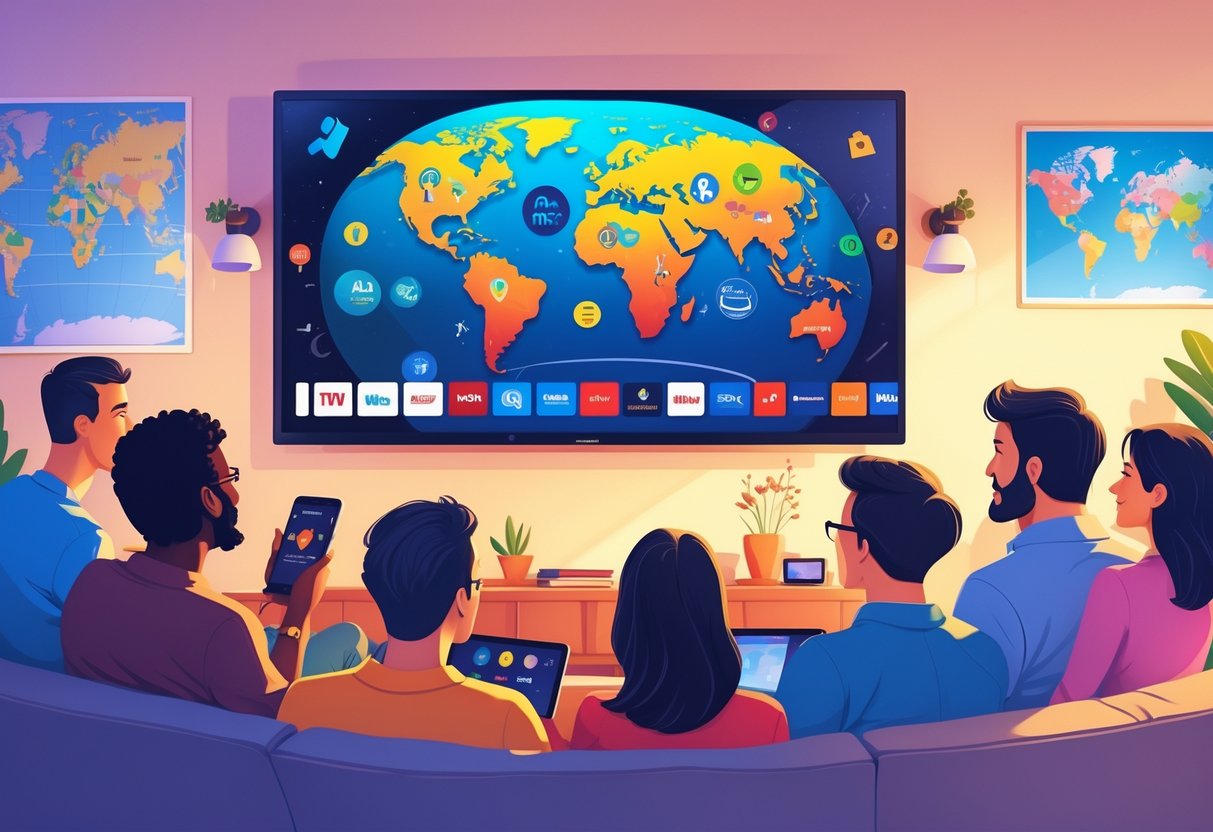
Essential Technology And Device Compatibility

Selecting the right devices and technology ensures a seamless viewing experience when accessing global television content.
Device compatibility, app support, and picture quality play a key role in maximizing user satisfaction.
Smart TVs And Streaming Devices
Smart TVs offer built-in app stores that support most international streaming platforms.
This allows users to install region-specific apps, such as BBC iPlayer, ZDFmediathek, or Hulu, without extra hardware.
Compatibility with major brands like Samsung, LG, and Sony means users can stream global shows using only their TV remote.
Dedicated streaming devices, including Roku, Amazon Fire TV, and Apple TV, expand content options.
These devices typically support a wider range of international apps, making them ideal for those looking to access lesser-known channels.
Users can connect a streaming stick or box via HDMI to almost any modern television, ensuring flexibility.
For consistent performance, it’s helpful to update device firmware regularly.
Older devices may lose app support or experience slower streaming speeds.
Setting Up An Android TV Box Or IPTV App
An Android TV box is a popular choice for watching content from international TV networks.
It runs a version of Android that supports a variety of apps, including VPNs needed to bypass geo-restrictions.
Users can access official app stores or install APK files to broaden channel selection.
To set up an Android TV box, connect it to your TV with HDMI, link to Wi-Fi, and sign in with a Google account.
Once online, downloading preferred IPTV apps like TiviMate or Kodi is straightforward.
IPTV apps allow users to input a playlist (M3U or Xtream Codes) to stream live and on-demand channels from various countries.
Careful selection of IPTV providers is important, as quality and legality may vary.
Strong Wi-Fi or Ethernet connections are recommended for stable video playback.
Ensuring Top Picture Quality
Picture quality is key when streaming global shows, especially with HD or 4K content.
Device compatibility with streaming resolutions should be confirmed—many Smart TVs, Android TV boxes, and streaming sticks are compatible with 1080p or 4K signals, but some older models may not support higher resolutions.
A fast and stable internet connection minimizes buffering and maintains video clarity.
Wired Ethernet connections can provide more reliable speeds compared to wireless.
For streaming in Ultra HD, a minimum 25 Mbps internet plan is recommended.
Checking app and device display settings ensures content plays in the best possible quality.
Users can adjust resolution, enable HDR, or select preferred aspect ratios within both the device menu and app settings.
Some platforms, like Global TV, may also limit streaming quality based on region or subscription, so it’s useful to review platform requirements before use.
How To Use VPNs To Unblock Geo-Restricted Content
A VPN allows users to access international streaming services and TV networks that are otherwise unavailable due to region-based restrictions.
Using a VPN masks the user’s actual IP address, making it appear as if their device is in another country.
Choosing A Reliable VPN
When selecting a VPN, it is critical to consider reputation, server coverage, speed, and privacy.
Popular providers such as ExpressVPN and NordVPN are known for reliably bypassing geo-blocks on streaming platforms.
These VPNs offer a large selection of servers worldwide, making it easier to access content from specific regions.
Look for VPNs that do not throttle bandwidth, support multiple device connections, and have straightforward apps for both desktop and mobile.
User reviews and independent tests can provide insight into real-world performance and reliability.
Reading detailed guides such as this VPN selection overview helps make a more informed decision.
Many quality VPN services provide money-back guarantees, so users can test the ability to stream international TV without risk.
Avoid providers that log user activity or have unclear privacy policies.
This ensures security while streaming global content.
Best Practices For Maintaining Privacy
Online privacy should remain a priority when using VPNs to unblock geo-restricted media.
Always choose VPN services with strict no-log policies and strong encryption standards like AES-256.
Enabling a kill switch feature—if available—ensures no data leaks if the VPN disconnects unexpectedly.
Users should avoid sharing their VPN account credentials, as doing so may compromise personal information.
Selecting a VPN that regularly updates security protocols helps safeguard against new cyber threats.
Changing the IP address frequently by switching servers provides another layer of anonymity.
For maximum privacy, combining a VPN with private browsing modes can limit the tracking of online behavior.
Refer to guides on maintaining privacy while streaming global content for more detailed recommendations.



